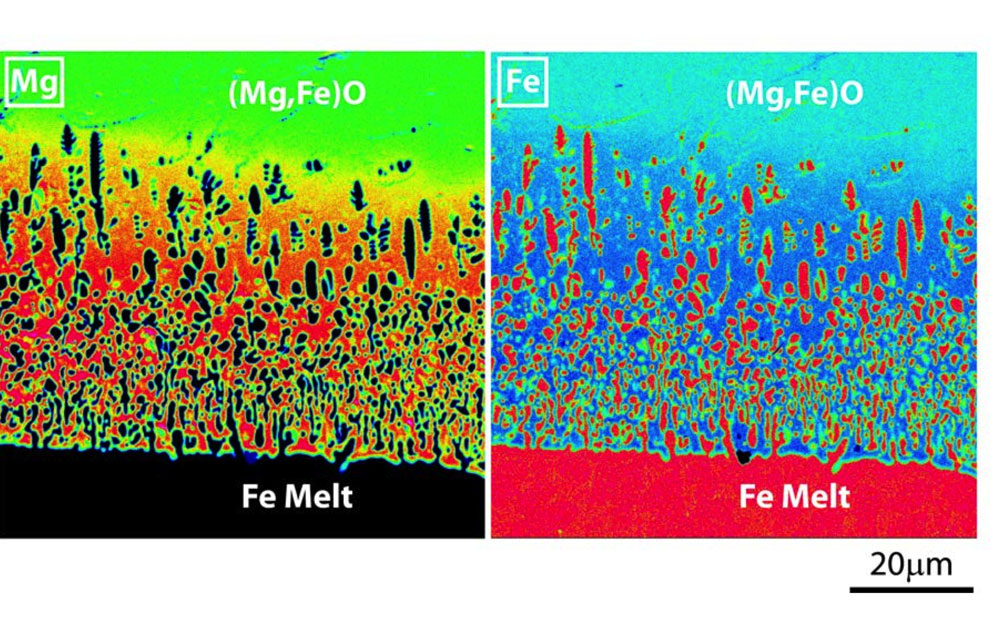Mysterious Metallic Blobs Help Reveal Planets' Innards


Metallic blobs that rise from Earth's core might help explain the mysterious innards of other planets, new research suggests.
Under the outer crust of the Earth sits the rocky mantle layer and then the planet's metallic, iron-dominated core. Scientists can probe these layers indirectly by measuring how the speed of seismic waves and electrical signals change as they zip through them. Analysis of the lowermost mantle in past studies revealed areas of high electrical conductivity (meaning that electric signals travel very easily) and low seismic velocity, suggesting that iron from the outer core was penetrating the mantle.
However, it remained a mystery as to how iron from the core might extensively chemically interact with the mantle. Known processes for how metal from the core might infiltrate rock in the mantle were either too slow or too small in scale to explain the results that researchers saw.
Now a phenomenon discovered by accident and described in the new study in the Dec. 13 issue of the journal Naturereveals that blobs of iron-rich liquid from the outermost core might have, over the history of the Earth, led to a metal-rich layer up to 60 miles (100 kilometers) thick in the Earth's lower mantle.
"This work showed that there is a very efficient chemical interaction between the rocky part and the iron-rich part of Earth and other planets," said researcher Shun-ichiro Karato, a geophysicist at Yale University.
Karato's student Kazuhiko Otsuka came to Karato saying that an experiment did not go well — the metal jacket in which his rock sample was enclosed melted by accident.
"I inspected his sample to see what happened and discovered that molten iron penetrated into the whole sample much faster than I expected from the classic model," Karato told OurAmazingPlanet.
Get the world’s most fascinating discoveries delivered straight to your inbox.
Further experiments mimicking this accidental finding brought molten iron in contact with crystals of magnesium-iron oxide at the high pressures and temperatures found at the core-mantle boundary. These revealed that after a few minutes, blobs of iron-rich liquid penetrated more than 100 micrometers — the average width of the human hair — into the crystals. The researchers suggest this infiltration is driven by how the concentration of iron oxide varies within the magnesium-iron oxide crystals. The more iron oxide there is in a crystal, the more iron moves in.
"Iron loves iron oxide ... iron penetrates deeper into magnesium-iron oxide to eat more iron oxide," Karato said.
These findings might help explain dense layers thought to exist in the deep mantle of other planets, such as Mercury. However, magnesium-iron oxide is a minor component of the mantle of Earth and Mercury, so researchers are also looking at how other minerals might affect the migration of iron.
"Similar studies must be made on major components such as perovskite, for Earth, and olivine, for Mercury," Karato said. "We will extend this work to other minerals, such as perovskite and olivine, and to a broader range of conditions, particularly to higher pressures."
This story was provided by OurAmazingPlanet, a sister site to LiveScience.



